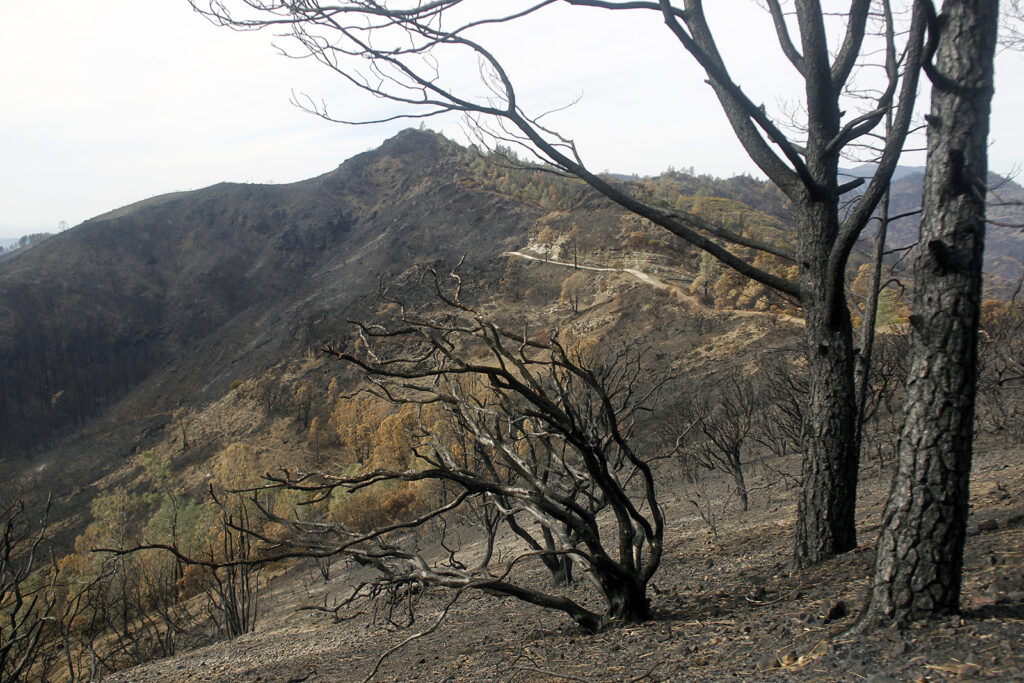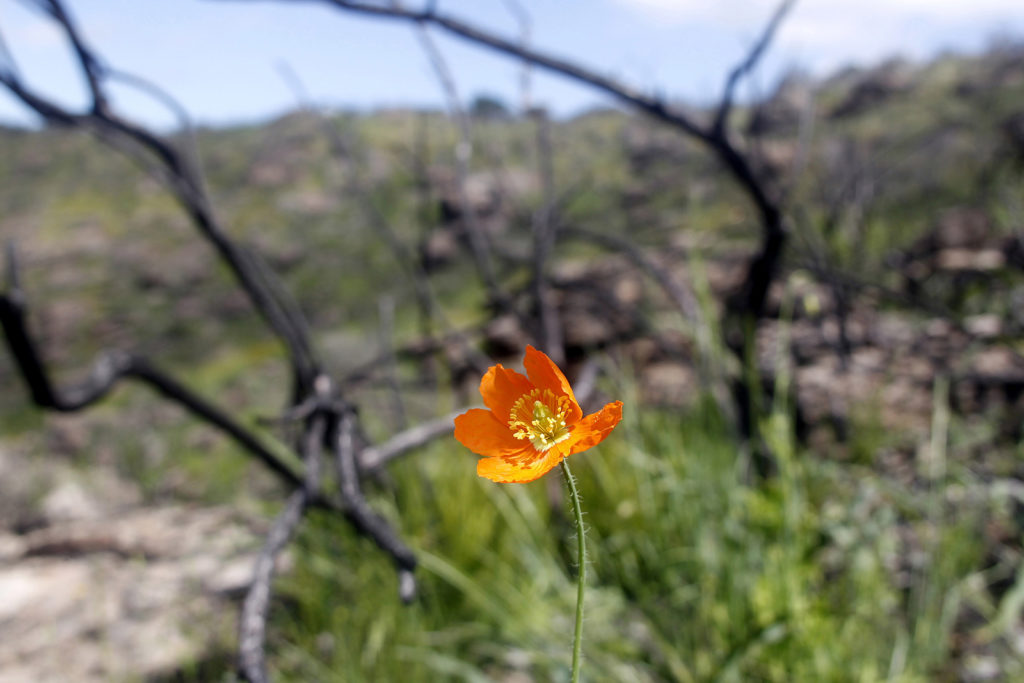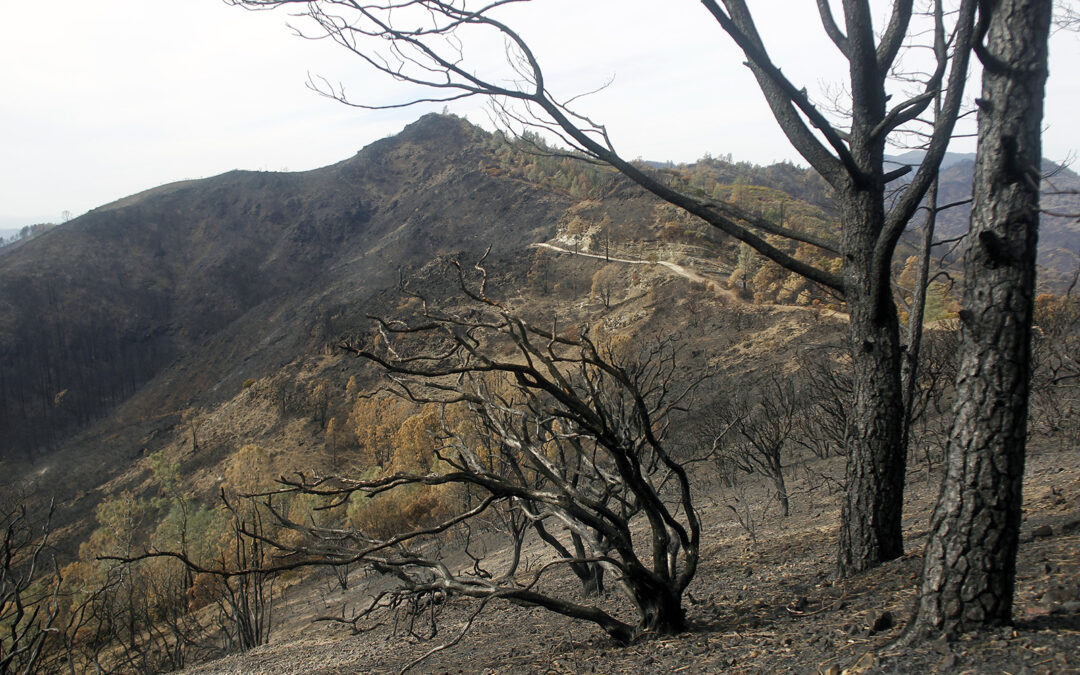Based on our experience after previous fires, we expect our natural systems to show resilience and respond well.
Stewardship staff are also working to build upon on our active fuels reduction and restoration programs, including prescribed burning (see the article on the Spanish Valley easement), rotational grazing (see the article on our sheep/goat grazing program), invasive species control and forest management, in order to increase the resiliency of our lands to climate change and extreme wildfires. Finally, Stewardship staff are participating in the core team of partners working to develop Napa’s Countywide Community Wildfire Protection Plan.

Ridgeline trail to Potato Hill after 2020 Glass Fire.

This Fire Poppy (Papaver californicum) – found on our Foote Botanical Preserve on Mount George in 2018 – got its germination cue from the smoke of the 2017 wildfires.

